 Where were you? Where were you? Where were you when you were shit?
Where were you? Where were you? Where were you when you were shit?
A refrain heard at many a ground in England, aimed at the supporters of clubs who magically appeared from nowhere once their new found side became awash with cash and trophies. You’ll even see a variation of it on message boards within the same club, with those who have supported the team through thick and thin berating the ‘Johnny-come-lately’s’.
What has this to do with the excellent The Soccer Diaries – An American’s thirty-year pursuit of the International game by Michael J. Agovino?
Well, Agovino can justifiably claim to be a pioneer. He was there in America getting his first taste of the joy of soccer way back in 1982, years before supporters groups of the US national team such as the American Outlaws (founded in 2007) came on the scene and the digital revolution brought soccer from every corner of the globe into bars and homes around America.
So what started the journey for Agovino, an American kid with Italian roots growing up in the Bronx, in a city where the sporting scene was dominated by its teams in the MLB, NBA, NFL and NHL?
In 1982 the FIFA World Cup took place in Spain and Agovino managed to watch on the Spanish International Network (SIN) a game between Argentina and Belgium. He was hooked, Agovino “wanted to be part of that. It was less than two hours, less than a baseball game or football, basketball or hockey but it was exhausting – and exhilarating.”
Later that year the author went to watch a FIFA World All Star game for the benefit of UNICEF at Giants Stadium where he saw the likes of Keegan, Socrates, Tardelli and Zoff. With schoolboy enthusiasm he craved to learn more about the game, its players and the teams they played for.
Agovino’s deep joy at wanting to soak up all he could about soccer is evident in his writing in this early section of the book and brought back memories of my own wide-eyed innocent elation in falling in love with the game. However, back in the early 80s access to coverage of soccer in America was limited, with much of the written press (what little there was) of a patronising nature. Undeterred the young Agovino managed to get copies of games on VHS tapes, magazines and books as his thirst for the game continued to grow.
In terms of the format of the book, those early years of Agovino’s soccer addiction are captured in Part 1 of the book, The Dark Ages, covering the period 1982 – 1993, followed by Part 2, The Renaissance, 1994 – 2003, and Part 3, The Enlightenment, 2003 – 2012. Besides detailing Agovino’s journey from childhood to adulthood, other strands include the ups and downs of soccer within America and the changing nature of New York and its occupants.
Within Part 2 the youthful enthusiasm gives way to a more measured viewpoint as Agovino has to juggle the needs of seeking work as a journalist whilst still maintaining his connection with the game. During this period he feeds his habit by attending games at the 1994 World Cup held in America, attending games in Europe and some within the newly created Major League Soccer (MLS). This section also reveals Agovino’s other passions in the form of travel, art and literature (the latter two no doubt influencing his choice of title for the books three parts).
Part 3 continues to see the author take in live soccer games where he can, and work on related freelance assignments. Here though Agovino seems frustrated with how soccer has evolved not just in his own country, but globally. Where once as a child he had to rely on SIN for his soccer fix, now America was flooded with coverage from across the world, creating a generation of fans, “star fuckers”, who have a simplistic awareness of the game gleaned from watching the top sides within the top leagues. Indeed it appears to be part of Agovino’s ‘old school’ mentality to the modern game, one as a reader I sympathise with.
Further evidence is provided in his analysis of what was the European Cup, but is now the bloated money-making competition rebranded as the Champions League. He shows that he understands the history of the tournament in stating, “the clubs that excelled in the Champions League were not necessarily the pedigreed or the most innovative or had the best youth systems…the winning teams were now the ones that spent the most, the Super Clubs.”
So does this view within Part 3 reflect its title? Indeed, how do the titles of each section relate?
Part 1 is The Dark Ages (1982 – 1993) and can be defined as an era of ignorance or an early stage in the development of something, which could be applied both to Agovino as he comes to start his soccer education and the state of soccer in America, with the demise of the NASL, an unsympathetic media and a game that seemed to exist only in an underground capacity.
Part 2 is The Renaissance (1994 – 2003) which suggests a period of revival, which is certainly true of soccer in America during this time with the country being awarded the 1994 World Cup, the launch of the MSL and improved displays by the US national team. For Agovino, his renaissance comes in the form of of his intellectual and artistic development.
Part 3 is The Enlightenment (2003 – 2012) and can be defined as reaching a point of understanding, which could be applied to the author and his years of experience of watching and writing about soccer, so that his views are rounded. However, in an interesting point, could Agovino have travelled not to enlightenment, but to the dark ages, since he now finds his country flooded by games from all over the world and is unimpressed by a generation of shirt wearing fans who have nothing but a superficial knowledge of the game? Indeed in terms of the game in America, is the enlightenment based on the very aspects that now frustrate Agovino?
Whatever the answer, the fact remains that the author’s journey can never be repeated, as the path he travelled is no longer there. Fans in America can now watch soccer from leagues all over the world, with access to knowledgeable and insightful writing and punditry that Agovino could only dream of back in 1982.
The Soccer Diaries though make an invaluable contribution in capturing the innocence and joy of the game in another time as it was discovered by a young boy and his journey to understand the global game. It’s a book that should be read by fans new or old, whatever your team and wherever your country.
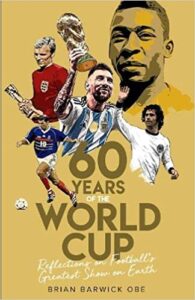 60 Years of the World Cup is a personal, nostalgic, fun and frank reflection on the author’s six-decade association with football’s biggest showpiece.
60 Years of the World Cup is a personal, nostalgic, fun and frank reflection on the author’s six-decade association with football’s biggest showpiece.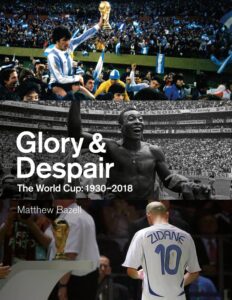 Glory and Despair is a pictorial celebration of the World Cup that takes us on a spellbinding journey, from the inaugural tournament in 1930 to the present day.
Glory and Despair is a pictorial celebration of the World Cup that takes us on a spellbinding journey, from the inaugural tournament in 1930 to the present day.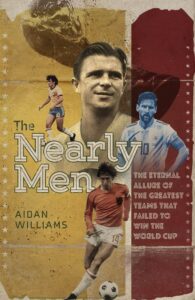 The Nearly Men tells the fascinating stories of some of the most revered international football teams of all time.
The Nearly Men tells the fascinating stories of some of the most revered international football teams of all time. Today will see the tournament start, but for many fans in England and beyond thoughts will have been dominated by the release of the Premier League fixtures this morning. You have to ask though, did it really need to be today to coincide with the start of the World Cup? The answer to me at least, is that the Premier League wanted maximum exposure and feels rather like a spoilt child looking for attention by jumping up and down shouting, “I’m here, I’m here”.
Today will see the tournament start, but for many fans in England and beyond thoughts will have been dominated by the release of the Premier League fixtures this morning. You have to ask though, did it really need to be today to coincide with the start of the World Cup? The answer to me at least, is that the Premier League wanted maximum exposure and feels rather like a spoilt child looking for attention by jumping up and down shouting, “I’m here, I’m here”.
 Where were you? Where were you? Where were you when you were shit?
Where were you? Where were you? Where were you when you were shit?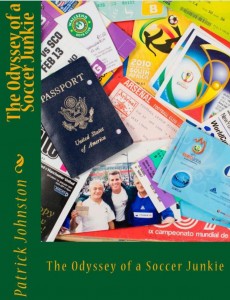 Odyssey: a long and eventful or adventurous journey or experience.
Odyssey: a long and eventful or adventurous journey or experience.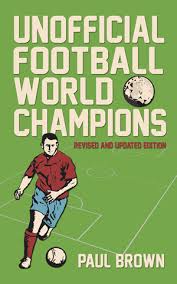 However, that then leads to the supplementary question of, how do teams become UFWC? Well there is a logical answer. All football fans know that the FIFA World Cup first held in 1930 and every four years since (except 1942 and 1946 due to the Second World War), produces the ‘official’ World Champions. What author Paul Brown came up with was an alternative notion where, “football’s world champions were decided via a continuous series of title matches stretching back to the very first international football match”.
However, that then leads to the supplementary question of, how do teams become UFWC? Well there is a logical answer. All football fans know that the FIFA World Cup first held in 1930 and every four years since (except 1942 and 1946 due to the Second World War), produces the ‘official’ World Champions. What author Paul Brown came up with was an alternative notion where, “football’s world champions were decided via a continuous series of title matches stretching back to the very first international football match”.